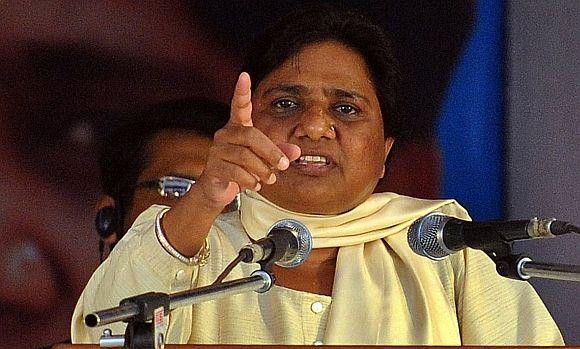
Continuing Sheela Bhatt's series where UPwallahs discuss the mindset of voters, the personalities of its leaders and lives in the election-bound state.
Part I: 'It is likely to be a BSP-BJP government in UP'
Part 2: 'Put your bets on the Samajwadi Party and the Congress'
In the earlier part of a fascinating interview, economist Arvind Mohan had told Sheela Bhatt why he thought "Uttar Pradesh's fiscal story is extraordinary."
Read it here: 'If you have money, invest it in UP'
In this, the final segment of the interview, he discusses Mayawati's handling of UP's economy.
What is Mayawati's contribution in improving the economy of Uttar Pradesh?
As far as the transition is concerned, she continued with the trend and further contributed to it, particularly so, if you are talking about the fiscal story.
The fiscal story during her reign is significantly better than what happened earlier.
Two, when you are looking at the growth story, again, you find that growth is more visible during this period.
I'm not at all saying that the entire contribution has come exclusively from Mayawati. Such changes, always, happen over a period of time. So there have been successive interventions.
Another important thing we have to realise is that UP has certain critical advantages. One of them is that we are a consumer state.
The state is a lucrative consumer state. Now tax collection, as I was saying earlier, has seen 17 percent growth, which very other few states were able to have during that meltdown phase.
Please ...
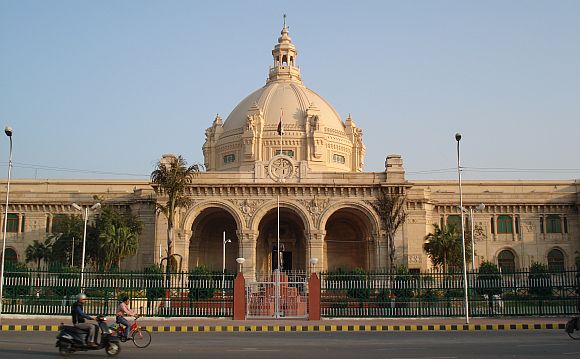
Sheela Bhatt's interview with Arvind Mohan continues:
UP has an advantage because the shift towards VAT (the centrally-administered Value Added Tax scheme) is helping even though UP was late to join. But the fact remains that Kerala was the first state which showed surplus after introduction of VAT in the second year.
UP is the first state in India to show surplus in the first year.
UP is the only state in India to achieve so. This is the advantage because UP is the consumer state and VAT gives critical advantage to consumers.
Economic reforms were introduced in 1991. I think the time has come when we have to move into second generation reforms. Truly speaking, the country is yet to move into it. But still there are some small movements which are already happening towards second generation reforms.
And what could be termed as the second generation reform? It is rural development and human development. Health, education, agriculture and such sectors are moving forward.
The advantage will lie with UP and Bihar, whether you want it or not. The time has come when you will find that India's growth will be determined by states like UP and Bihar. Whether somebody does something or doesn't do something.
Please ...
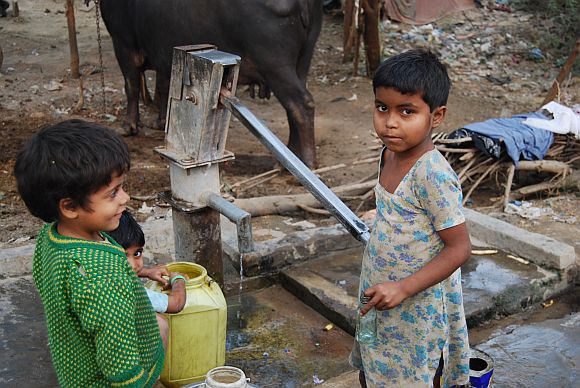
China has water, population and vast land. And all these three things are with UP.
UP is still a BIMARU state. Tell us how the managers of UP's economy look at such vast resources comparable to China?
I have reservations against this term BIMARU. But I think the issue you are raising is very relevant. Many estimates by international agencies suggest that the 21st century will be ruled by three industries -- agriculture, food processing and textiles.
And in these three critical industries, UP, surely, has more advantages than any other location in the world -- this is the Gangetic belt.
See these three sectors are estimated to be the ruling industries of the world. The future of the world will be defined by growth of these industries, along with, maybe, the knowledge industry.
When you talk about volumes, can you really compare UP with anybody else?
When you are talking about agriculture the scale in UP is different and not comparable. Also, I feel the IT revolution may be coming to saturation. So these are the defining industries or the defining engines of transition of growth.
Please ...
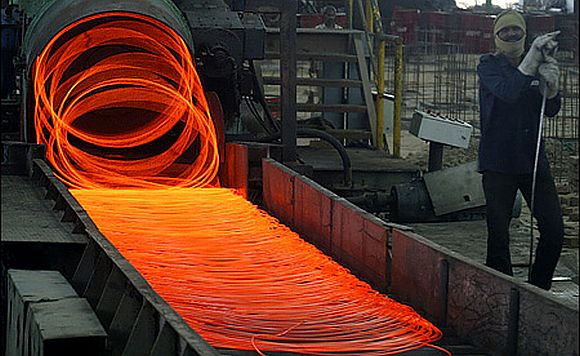
The challenge of UP is, also, India's challenge. For more than 20 years now we had made this country grow with just one engine of growth. That is 'industry.'
I have always been saying, and this is my firm belief, India is a three-engine aircraft.
Agriculture that includes rural development and the third important growth engine is human development. The time has come to put to use these two engines.
The moment you open these two engines, I believe that even if the gold sinks or even if it melts, India will keep growing in double digits.
You cannot stop India from growing if we start developing rural areas and human resources.
For several years, India has been growing at some 7, 8 per cent, and from where has this growth come? It has come from Maharashtra, Tamil Nadu, Gujarat, Andhra Pradesh and such states.
This story will change. It is already beginning to change already your political and social leaders have changed.
Uttarakhand, Bihar, UP, Orissa, they are new contributors to growth now.
You are looking at China. China started its reforms in the 1970s. They, like India, couldn't do everything in one go. For them first generation reform was an agriculture revolution. And once that process was completed only then were they able to move into second generation reform that was the industry-centric change.
India has opted for a reverse process. Our first generation reform was in the industry sector and we made urban-centric changes and then we were expected to move into rural-centric and human development change.
Unfortunately, it hasn't happened as of now. But now the time has come. Sooner or later, whether we want it or not, this is something which will happen.
Please ...

And, there is no doubt that as we move into rural-centric reforms, as we engage deeply into development of food processing, agriculture and human resources, it will be UP's critical advantage as much as the mainland.
UP, Madhya Pradesh, Bihar are poised for real growth.
UP is India's food bowl. When we talk about India's food bowl, we talk about three major states -- Punjab, Haryana and UP. And the order is, whatever Haryana produces, Punjab produces twice.
Whatever Punjab produces, UP produces twice as much.
Our per capita production may be low, but our overall production is twice as much as Punjab produces.
Uttar Pradesh's budget was around Rs 176 lakh crore last year.
Oh! Exactly as much as the 2G spectrum scam!
(Laughs heartily) UP's budget is bigger than most countries of Europe. UP is a revenue surplus state. UP's revenue deficit turned surplus in 2007. That happened despite the global meltdown, despite the Sixth Pay Commission.
The fiscal deficit is close to 4.5 percent odd. The Twelfth Finance Commission's target was 3 percent for all the states in India. And, I think, in 2008 UP achieved it.
But after that expenditure increased, the pressure came due to the Sixth Pay Commission and it brought the state back to higher deficit.
In some respects, UP's figures are better than Gujarat.
How?
On many economic indicators, UP is better than most states in India. On many issues UP is between number 2 and 5 and in most crucial economic targets it is within top six states.
Please ...

Tell us, if we see the election from the premise of the political economy, how do you see Mayawati making gains because of the economic factor?
Mayawati's challenge is that, when you are talking about economic gain, whatever she has done during these five years is not very visible -- for example, the power sector.
Two, there were few opportunities which Mayawati could have easily made the world feel. For example, industrial transition, direct intervention which could have generated more jobs for the people.
Now these were opportunities because there was a stable government for five years. I think to some extent UP has missed out on some of these opportunities.
If she had taken UP on the path of industrialisation, she would have gained hugely. Remember, in the last Lok Sabha election she was being projected as the next prime minister. I think she could have become prime minister under the current circumstances had she delivered on the economic front in UP.
People could have felt the difference. For example, health services, employment generation, agriculture and industry could have been contributing factors in her rise at the national level.
UP's agriculture turnover is close to 18 to 19 percent of the state's economy. Already the service sector is in the range of 50 percent, UP's industry's contributes around 30 percent to the state's turnover.
Please ...
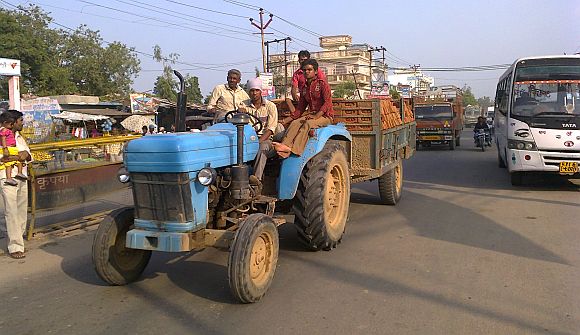
How do you see the post-election scenario?
This is the economy which is ready for transition. You can't get a better economy. The chief minister, who takes over the reins after this election, should keep two things in mind. For economic transformation five years are not enough.
So he or she should look at two things; One, long-term interventions because they are necessary for the future of the people here.
Two, they should also think about short-term interventions which can show results three years down the line.
See, direct employment opportunities in UP are available in food processing and health. Good quality health-care is not available to people. It has added to mortality rates in the rural sector.
Around 58 percent of the people of UP are being treated by quacks. This is a story which can change in a very short period of time. Three years is more than enough.
As I said before, power will be available soon. The state already has plans for around 20,000 mega watts of power generation by 2017. It is do-able.
Also, the road infrastructure is critically good now. Every village is now connected by a state road or highway.
Please ...

I am not saying that tomorrow onwards every possible problem in UP will be gone. But we have the fundamental raw materials. As you know water has not been harnessed, yet.
UP has unlimited human capital available. Again, you are again talking about a state which has 12 percent of the purchasing power of the country and 20 crore (200 million) people.
It means that every year, a few lakh (hundreds of thousands) televisions sets and refrigerators are sold in UP. Unfortunately, the state has not been able to invite huge investment for a long time.
UP continues to be one of the most attractive investment destinations. From 1991 till now, UP has remained in top five as far as attractiveness is concerned. But only the intent to invest has been there.
When it comes to conversion UP has been one of the worst performers. It means that the investor is interested that in turn means the economic opportunities exist.
If we are not able to convert it, it means the system -- the machine which has to convert this interest into reality -- is not working.
I think that is where things have cracked. UP's bureaucratic system has failed the state.
UP has the unique challenge. In the case of UP the reality is much better than the perception. Or perception is much worse than the reality.
I think that has to change. UP has everything else, everything will fall in place. I have no doubt that UP will create its own path in India.
...